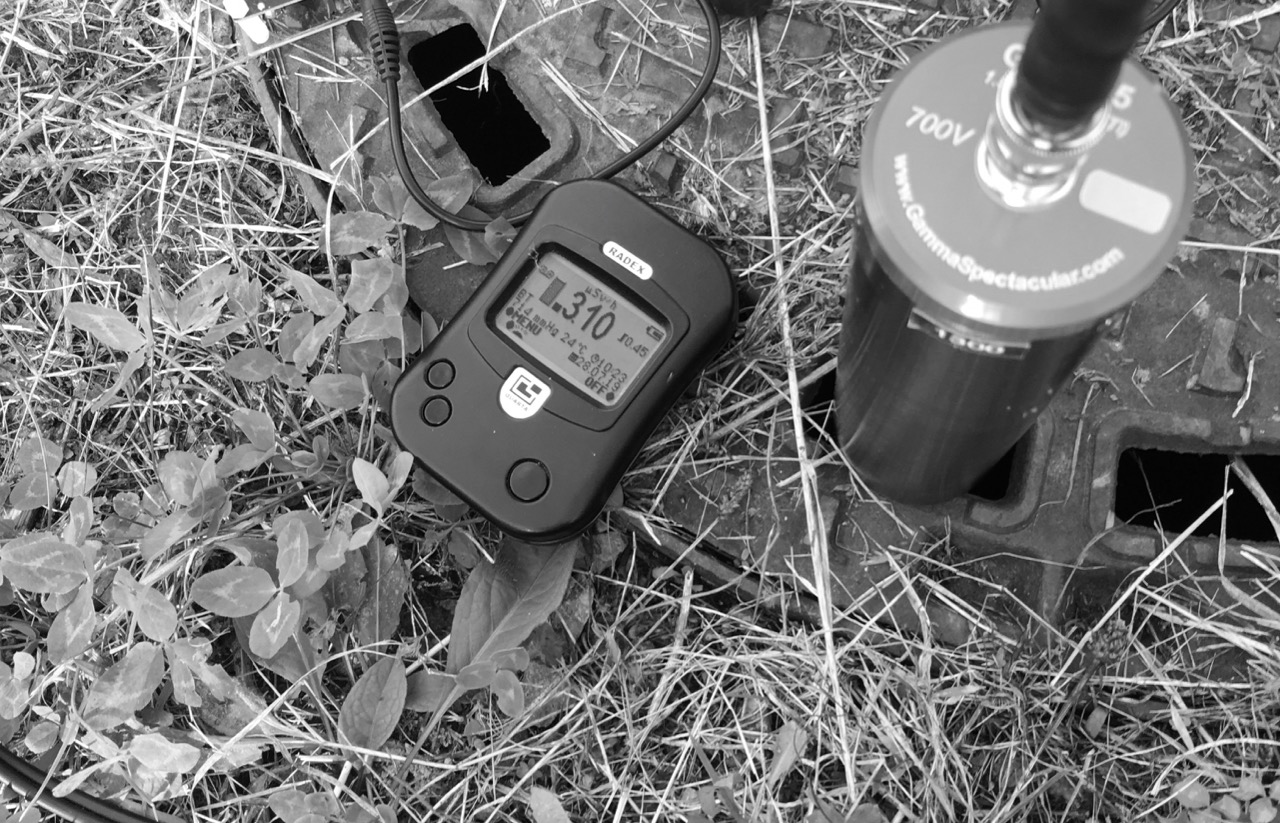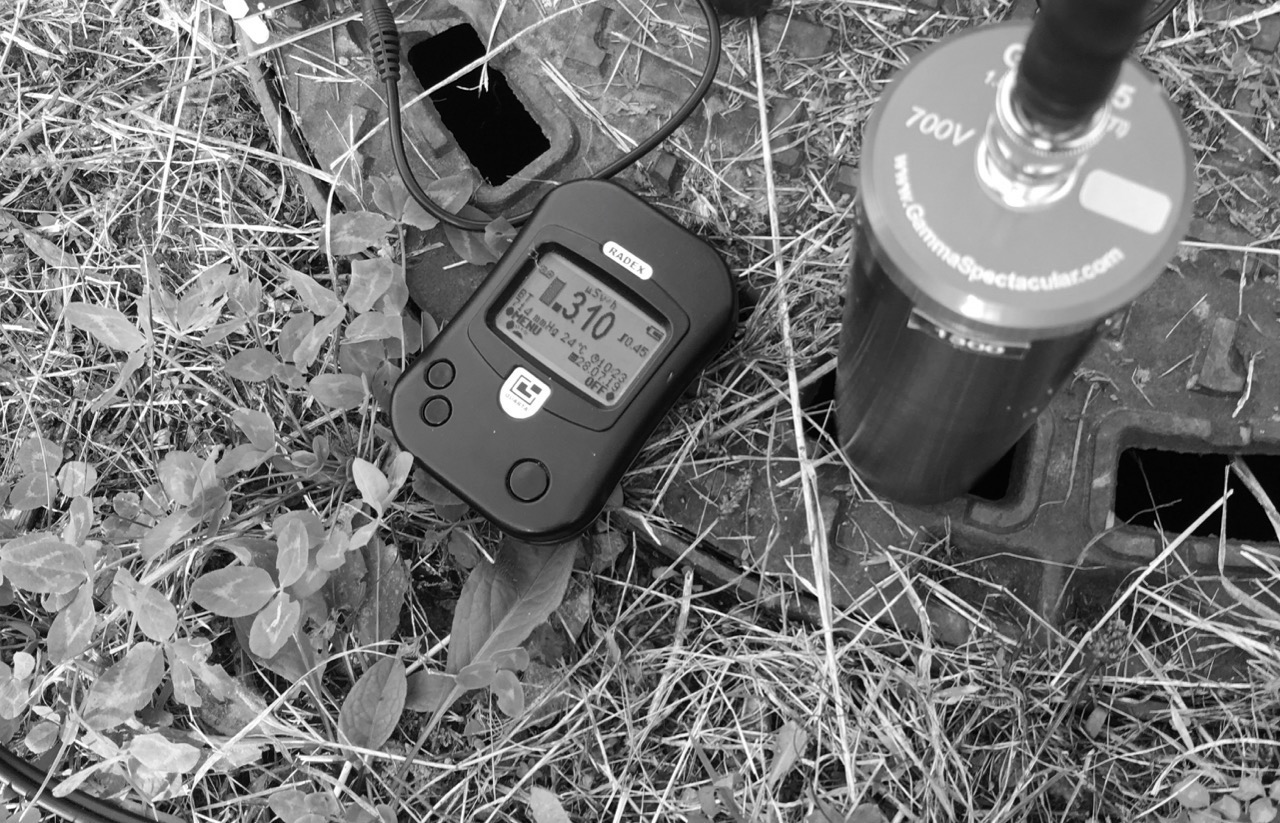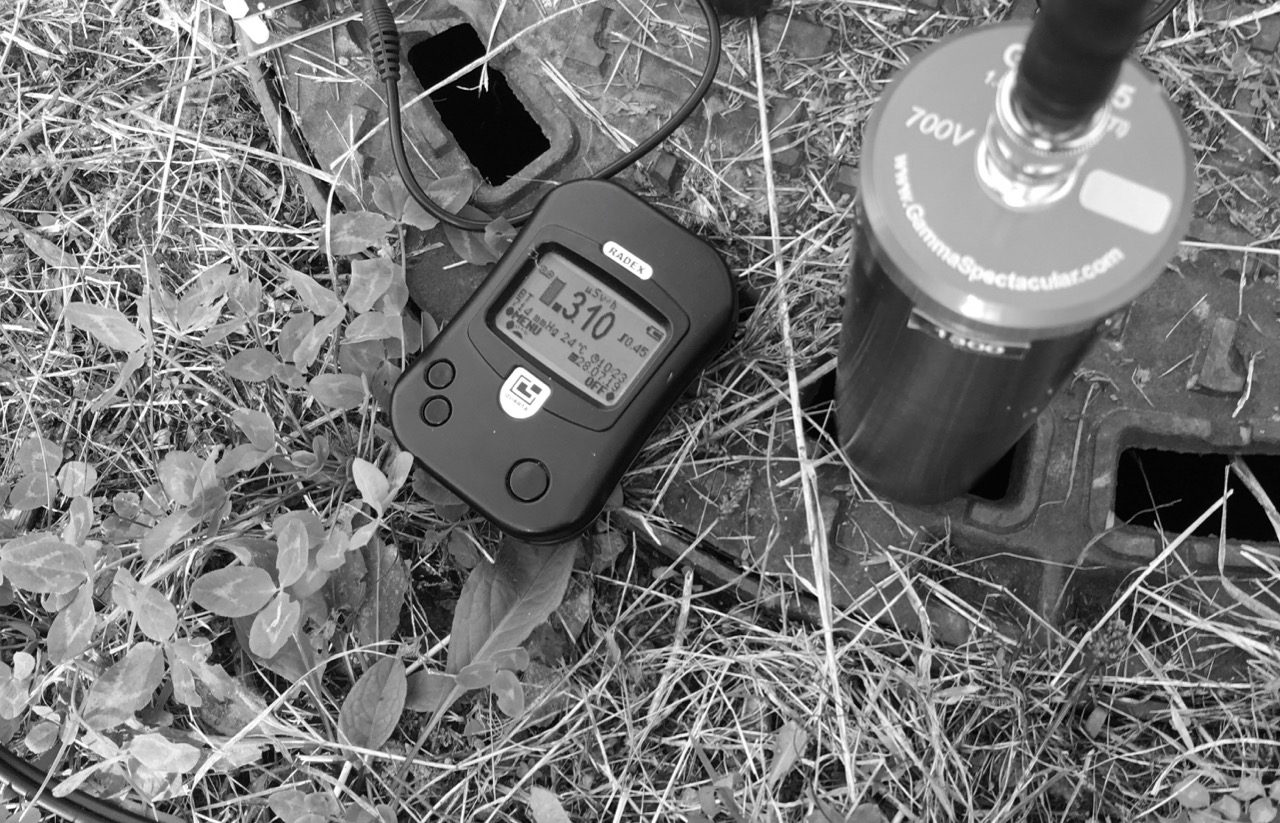Radiance
Existing instruments for the detection of ionizing radiation (such as geiger counter's and gamma spectroscopes) are either very limited or very expensive. This project aims to construct a fieldrecording device to detect, record and map ionizing radiation spatially in the landscape and to enable new types of documentary field recording.
We are surrounded by more and more radioactive pollution, due to a history of mining, nuclear energy, bombtests and military applications. And this will continue to expand in the coming decades given the state of the world. As we cannot get rid of it, we will have to accept this type of pollution as yet another fact of life and try to 'understand' it better and start to live with it.
Since it is invisible and inaudible to our human senses, we need to be able to relate to it so it has to become something we can see and hear and experience.
This research will focus on ways to make radioactive pollution audible and visible for artistic and experimental purposes and applications.
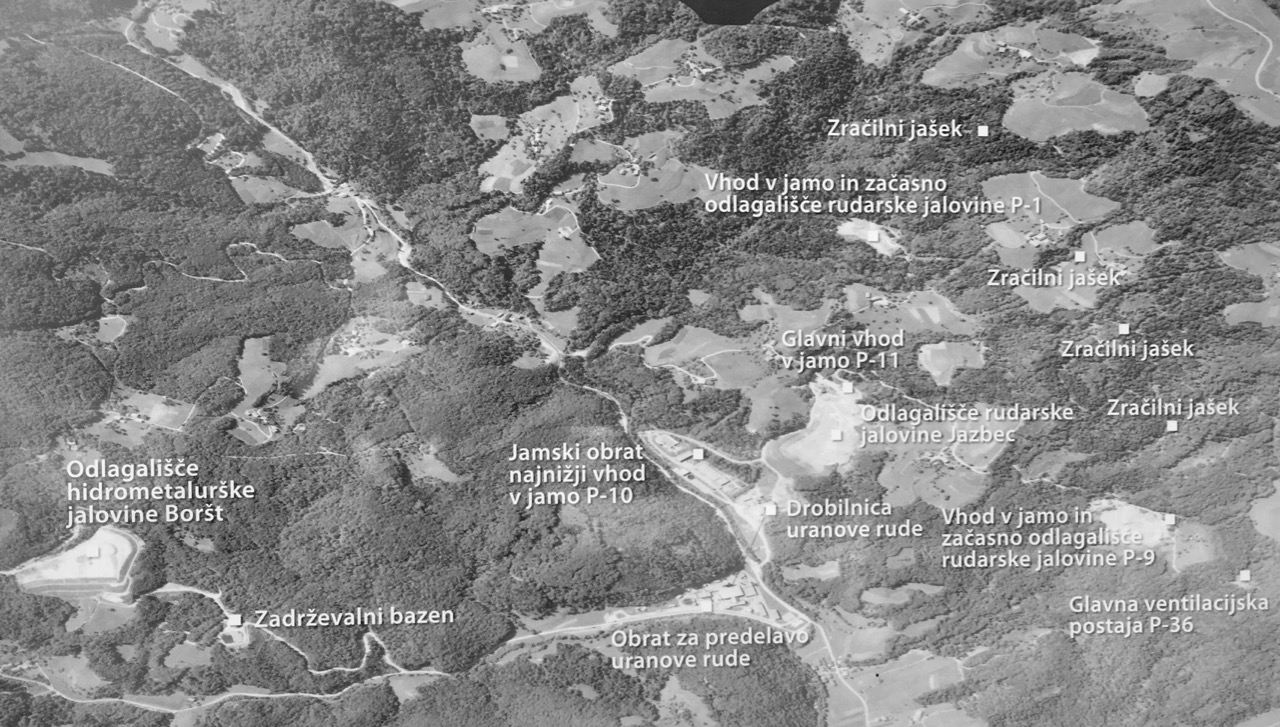
Fieldwork Slovenia
Site visit to the former uranium mine Žirovski Vrh
Date: 20190930
Address: Todraž 1, 4224 Gorenja vas, Slovenia
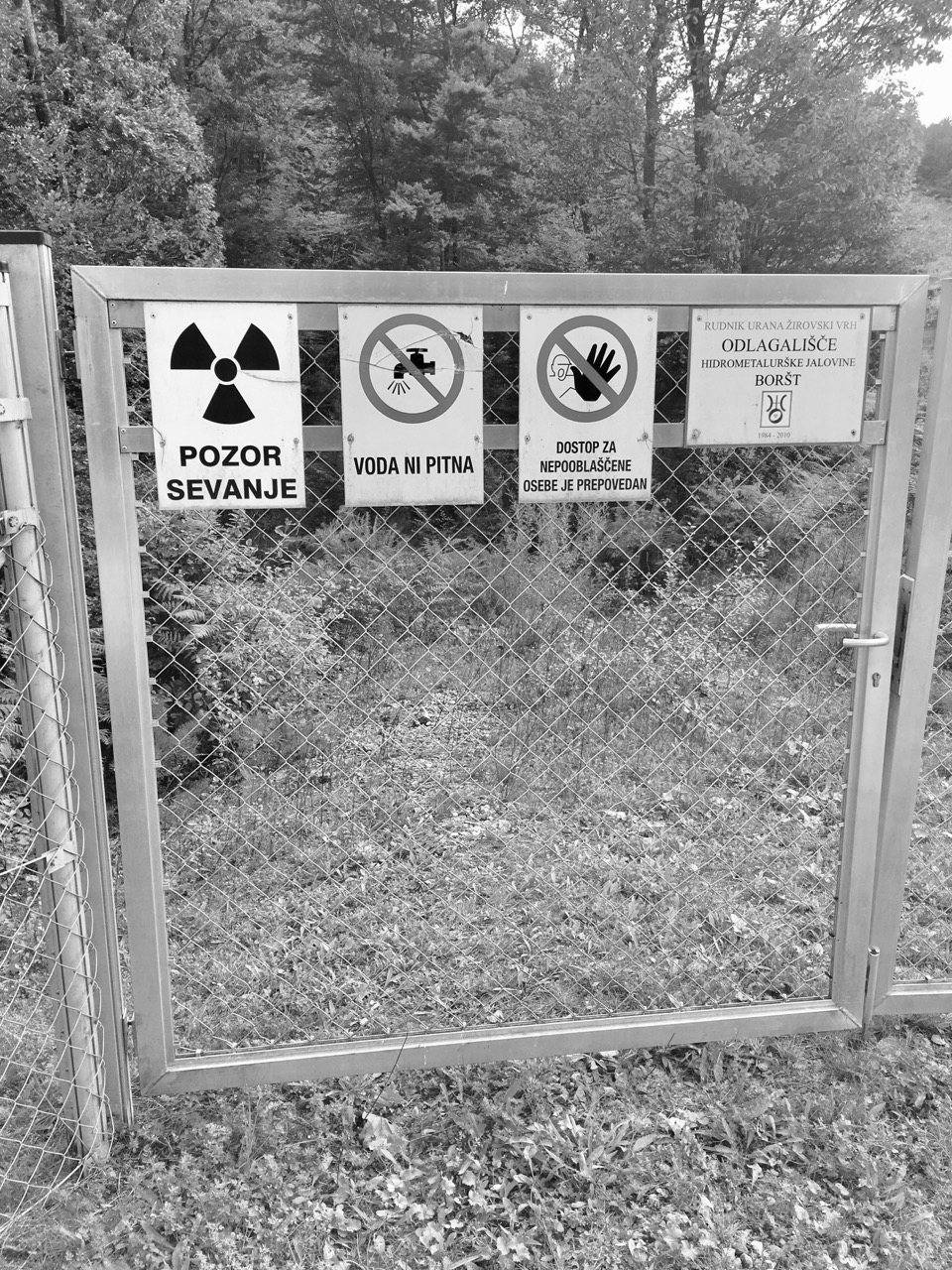
We visited the former uranium mine Žirovski Vrh and the Jazbec mill waste pile and the Boršt mill tailing site.
Zirovski Vrh is situated 45 km west from Ljubljana. The ore production in the mine started in 1982, and the yellow cake production in the mill started in 1984. The mine was 8 years operational and the oremill only 6 years. The whole operation was closed down in 1990. In this period 3.307.00 ton of excavated material was dug up, of which approximately 610,000 ton of uranium ore (with 0.7 kg of U per ton of ore), that resulted after processing in 452 ton of yellow cake.
After closing the mine a huge effort has been undertaken to minimise and contain pollution, by transforming the Boršt and Jazbec sites into remediation sites. Approximately 2.000.000 ton of radioactive waste has been buried there, covered with a thick layer of rocks and clay, on top of which green grass is grown. The sites are constructed on two slopes, both reminiscent of alpine meadows. Only the fences with warning signs on them remind these are different kind of meadows.
Driving and walking around in the area of the mine and the remediation sites the Radex does not pick up more than the usual (0.06-0.12 microS)
Only when driving up to the bottom of the Jazbec site, the measuments start to show some spikes (0.30.4) from rock formations next to the road.
On the bottom of the Jazbec slope we found a water drainage with serious ammounts of radiation (up to 3.0 microsieverts). So we decided to make some field recordings here, combining two geigercounters, on gamma spectroscope, a stereomicrophone and a ambisonics microphone
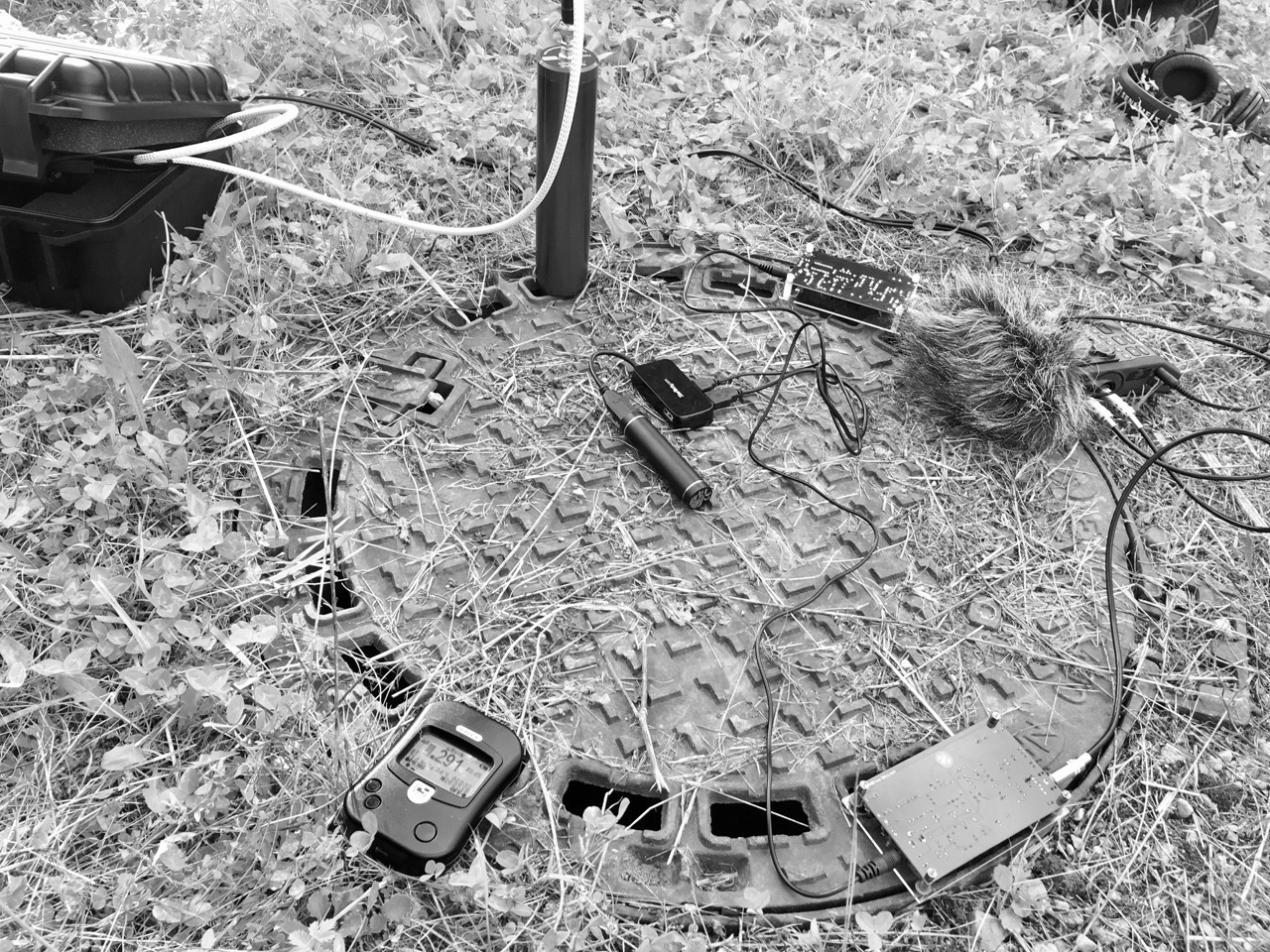
Findings
Most interesting finding was the way the sound from the 2 Geiger Counters integrated in the environmental sounds picked up with the Rhodes ambisonic mic and the Zoom H6.
Proposed improvements for next Fieldwork
- Integrate 1 or more Mole-Rat (EMF Sniffer) in the setup
- A grid of Geiger muller sensors in the landscape, 4-8?
- record gps/temp/pressure/gamma measurement levels (not as clicks but numbers)
Next steps for the prototype
- construct sensor packs with the geiger tubes (are there more robust tubes available?).
- record the readings in real time as audio signal (gps, compass, pressure ,temp, radiance, geiger pops, spectrometer etc), to apply this later as overlay in the video
